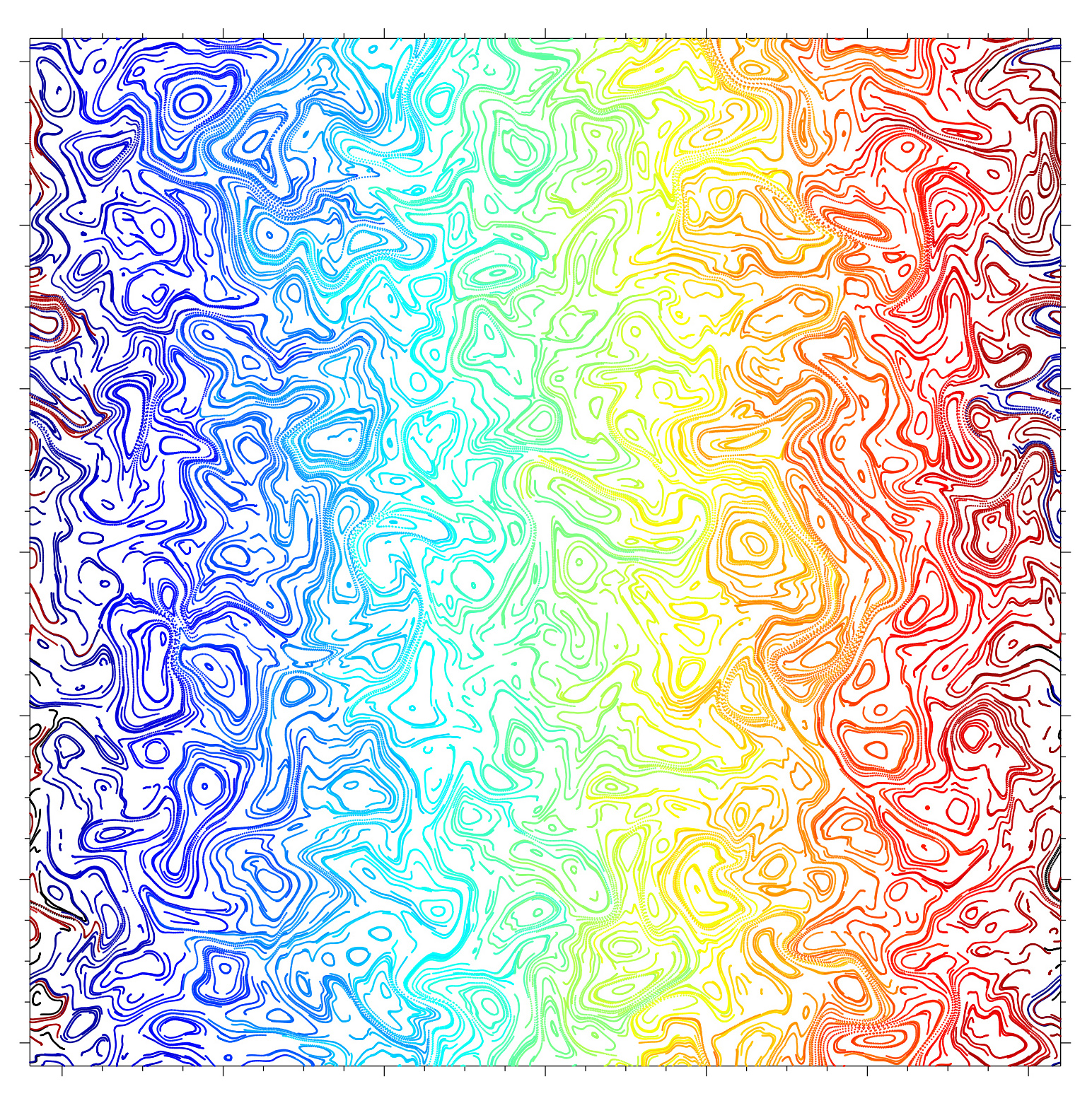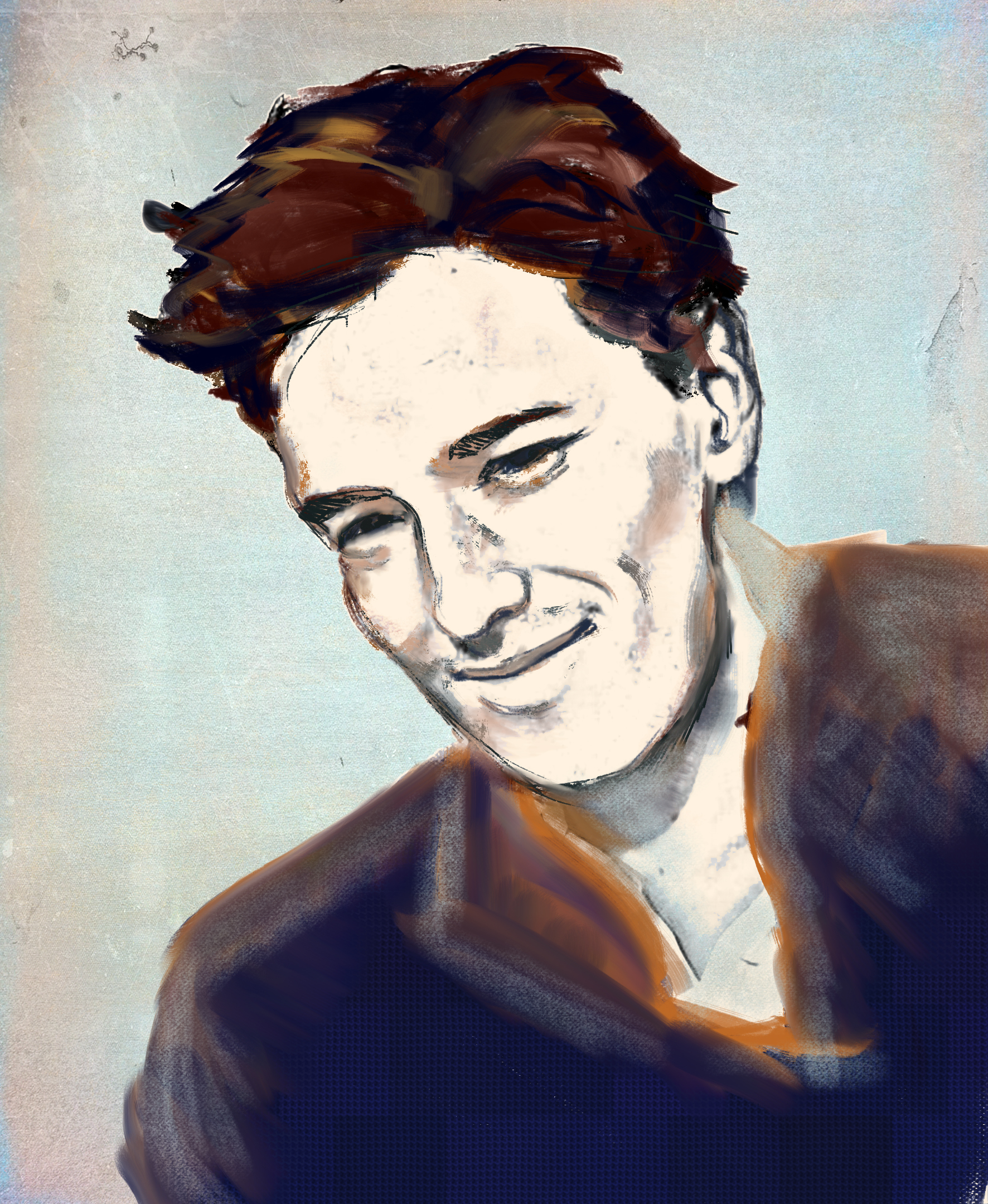September 2020, MJ Pueschel started his new research group. The staunch idealist brings unique theoretical expertise to DIFFER.
Connected to the world from home
Only twice MJ (‘everyone in science just calls me Em Jay’) Pueschel has set foot in the lobby of DIFFER since he started his position in September. But no matter, as a theoretical plasma physicist he does not need to actually be in the lab. And besides, MJ has been teleworking from home since 2016, so he is used to it. Since his life partner – Beata Tyburska-Pueschel, project leader of DIFFER’s ion beam facility – does have to be physically present at her job, he has followed her around. He worked for the University of Wisconsin from Cologne, and for the University of Texas from Eindhoven. Now, while temporarily lacking a DIFFER office, Pueschel participates in some twenty research co-operations all over the globe from his home.
Only twice MJ (‘everyone in science just calls me Em Jay’) Pueschel has set foot in the lobby of DIFFER since he started his position in September. But no matter, as a theoretical plasma physicist he does not need to actually be in the lab. And besides, MJ has been teleworking from home since 2016, so he is used to it. Since his life partner – Beata Tyburska-Pueschel, project leader of DIFFER’s ion beam facility – does have to be physically present at her job, he has followed her around. He worked for the University of Wisconsin from Cologne, and for the University of Texas from Eindhoven. Now, while temporarily lacking a DIFFER office, Pueschel participates in some twenty research co-operations all over the globe from his home.
Staunch idealist
Plasmas have been the focus of Pueschel’s attention from a very young age. As a boy, his fascination was sparked by fusion’s promise as a source of clean energy, he says. ‘But with my first plasma physics course, my fascination shifted from a sort of pop culture idea of fusion to the mathematical intricacies of plasma micro-turbulence simulations.’ Nevertheless, in the midst of all the scholastic practice Pueschel remains a staunch idealist, driven by the moral imperative to help humankind innovate itself out of the energy crisis as well as the ambition to create new knowledge.
Plasmas have been the focus of Pueschel’s attention from a very young age. As a boy, his fascination was sparked by fusion’s promise as a source of clean energy, he says. ‘But with my first plasma physics course, my fascination shifted from a sort of pop culture idea of fusion to the mathematical intricacies of plasma micro-turbulence simulations.’ Nevertheless, in the midst of all the scholastic practice Pueschel remains a staunch idealist, driven by the moral imperative to help humankind innovate itself out of the energy crisis as well as the ambition to create new knowledge.
Instability
Without plasma instability, there would not be an energy crisis, Pueschel once stated. He explains that in the 1950’s, fusion energy experimentation contained very little theory and much optimism. It was only when the experiments failed again and again, that the need arose for a greater theoretical understanding of what goes on inside a reactor. Gradually, it became clear that heat loss caused by plasma instability made the experiments fall apart. ‘Without instability and turbulence, the pioneers’ optimism would have been justified and we would have an abundance of clean fusion energy by now’, says Pueschel.
Without plasma instability, there would not be an energy crisis, Pueschel once stated. He explains that in the 1950’s, fusion energy experimentation contained very little theory and much optimism. It was only when the experiments failed again and again, that the need arose for a greater theoretical understanding of what goes on inside a reactor. Gradually, it became clear that heat loss caused by plasma instability made the experiments fall apart. ‘Without instability and turbulence, the pioneers’ optimism would have been justified and we would have an abundance of clean fusion energy by now’, says Pueschel.
Leaps of progress
Now the fifties are almost seven decades away. Why has it taken theory so long to come to the rescue of experimentation? ‘It has taken an insanely long time,’ Pueschel agrees. ‘This is partly due to lack of computational power in the past. Only since the nineties, theoretical predictions have started to measure up with experimentation. And we still see leaps of progress. The same amount of computing that twenty years ago took months, I can now get done in a day. Each new generation of supercomputers enables us to do new things to improve our understanding.’
Now the fifties are almost seven decades away. Why has it taken theory so long to come to the rescue of experimentation? ‘It has taken an insanely long time,’ Pueschel agrees. ‘This is partly due to lack of computational power in the past. Only since the nineties, theoretical predictions have started to measure up with experimentation. And we still see leaps of progress. The same amount of computing that twenty years ago took months, I can now get done in a day. Each new generation of supercomputers enables us to do new things to improve our understanding.’
Knobs
Pueschel’s ultimate aim is to help experimentalists keep the plasma better confined, for less heat loss and more fusion efficiency. His contribution is doing highly complex simulations, that use 10.000 to 100.000 processor cores at the same time. He then hands the knowledge gained to his DIFFER colleagues, to be used in experiments. The trick is to simplify the simulations and speed them up, so that they can be used for real-time control of the plasma. ‘As if you’d point a camera at the plasma, register that it is moving over this way, then do extremely fast computing to see which knobs you can turn to get it back in shape. For this, you definitely need computers. Human reaction time would be far too slow.’
Pueschel’s ultimate aim is to help experimentalists keep the plasma better confined, for less heat loss and more fusion efficiency. His contribution is doing highly complex simulations, that use 10.000 to 100.000 processor cores at the same time. He then hands the knowledge gained to his DIFFER colleagues, to be used in experiments. The trick is to simplify the simulations and speed them up, so that they can be used for real-time control of the plasma. ‘As if you’d point a camera at the plasma, register that it is moving over this way, then do extremely fast computing to see which knobs you can turn to get it back in shape. For this, you definitely need computers. Human reaction time would be far too slow.’
Highly Specialised Code
The computer code Pueschel uses to model plasma perturbations processes is called GENE, for Gyrokinetic Electromagnetic Numerical Experiment. Only a few handfuls of people in the world are thoroughly familiar with it, and of them Pueschel is the one who has been using it for the longest time. Being such a highly specialised expert makes him a much sought-after advisor in collaborations from the US through Europe and Japan. These international contacts are advantageous for DIFFER in several ways. They enhance its scientific output and global visibility, provide international exposure to PhD students and postdocs, and open the floodgates to new, inter-institutional financing options.
The computer code Pueschel uses to model plasma perturbations processes is called GENE, for Gyrokinetic Electromagnetic Numerical Experiment. Only a few handfuls of people in the world are thoroughly familiar with it, and of them Pueschel is the one who has been using it for the longest time. Being such a highly specialised expert makes him a much sought-after advisor in collaborations from the US through Europe and Japan. These international contacts are advantageous for DIFFER in several ways. They enhance its scientific output and global visibility, provide international exposure to PhD students and postdocs, and open the floodgates to new, inter-institutional financing options.
Being a father
In spite of having to work from home and seeing colleagues only online, Pueschel feels at home in his new position. He has received a warm and heartfelt welcome to the DIFFER family. And he particularly enjoys working with graduate students and postdoctoral researchers. ‘The more students you have, the more research fields you can explore’, says Pueschel. ‘And while I hope to become a real father in a few months, at some level I already have the satisfaction of seeing a kid grow up each time one of my students is graduating.’
In spite of having to work from home and seeing colleagues only online, Pueschel feels at home in his new position. He has received a warm and heartfelt welcome to the DIFFER family. And he particularly enjoys working with graduate students and postdoctoral researchers. ‘The more students you have, the more research fields you can explore’, says Pueschel. ‘And while I hope to become a real father in a few months, at some level I already have the satisfaction of seeing a kid grow up each time one of my students is graduating.’
More information
Web page group: Plasma Micro-Turbulence 
causes fusion plasmas to form such bubbles, which - depending on how
the plasma is heated - can either improve or reduce reactor performance.
Go to the News page.
